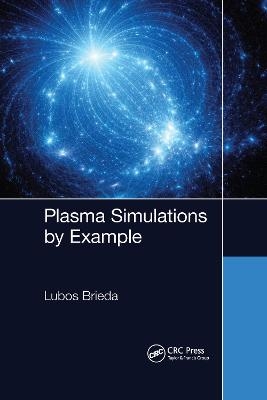
Plasma Simulations by Example
CRC Press (Verlag)
978-1-032-17614-7 (ISBN)
The study of plasmas is crucial in improving our understanding of the universe, and they are being increasingly utilised in key technologies such as spacecraft thrusters, plasma medicine, and fusion energy. Providing readers with an easy to follow set of examples that clearly illustrate how simulation codes are written, this book guides readers through how to develop C++ computer codes for simulating plasmas primarily with the kinetic Particle in Cell (PIC) method. This text will be invaluable to advanced undergraduates and graduate students in physics and engineering looking to learn how to put the theory to the test.
Features:
Provides a step-by-step introduction to plasma simulations with easy to follow examples
Discusses the electrostatic and electromagnetic Particle in Cell (PIC) method on structured and unstructured meshes, magnetohydrodynamics (MHD), and Vlasov solvers
Covered topics include Direct Simulation Monte Carlo (DSMC) collisions, surface interactions, axisymmetry, and parallelization strategies.
Lubos Brieda has over 15 years of experience developing plasma and gas simulation codes for electric propulsion, contamination transport, and plasma-surface interactions. As part of his master’s research work, he developed a 3D ES-PIC electric propulsion plume code, Draco, which is to this date utilized by government labs and private aerospace firms to study plasma thruster plumes. His Ph.D, obtained in 2012 from George Washington University, USA, focused on a multi-scale model for Hall thrusters utilizing fluid-kinetic hybrid PIC codes. He has since then been involved in numerous projects involving development and the use of plasma simulation tools. Since 2014 he has been teaching online courses on plasma simulations through his website: particleincell.com.
Lubos Brieda has over 10 years of experience developing plasma and gas simulation codes for electric propulsion, contamination transport, and plasma-surface interactions. As part of his master’s research work, he developed a 3D ES-PIC electric propulsion plume code, Draco, which is to this date utilized by AFRL and private aerospace firms to study plasma thruster plumes. His Ph.D, obtained in 2012 from George Washington University, USA, focused on a multi-scale model for Hall thrusters utilizing fluid-kinetic hybrid PIC codes. Recently, after four years working as an engineer at NASA's Goddard Space Flight Centre, he developed a 3D particle-based contamination transport simulation program CTSP for modeling plume impingement, particulate redistribution during launch, and molecular transport in vacuum chambers. Since 2014 he has been teaching online courses on plasma simulations through his website.
1. Fundamentals. 2. Plasma in a box. 3. Flow Around a Sphere. 4. Material Interactions. 5. Symmetry. 6. Unstructured Meshes. 7. Electromagnetic PIC. 8. Eulerian Methods. 9. Parallel Programming.
| Erscheinungsdatum | 01.10.2021 |
|---|---|
| Zusatzinfo | 200 Illustrations, black and white |
| Verlagsort | London |
| Sprache | englisch |
| Maße | 156 x 234 mm |
| Gewicht | 1190 g |
| Themenwelt | Naturwissenschaften ► Physik / Astronomie ► Astronomie / Astrophysik |
| Naturwissenschaften ► Physik / Astronomie ► Plasmaphysik | |
| ISBN-10 | 1-032-17614-8 / 1032176148 |
| ISBN-13 | 978-1-032-17614-7 / 9781032176147 |
| Zustand | Neuware |
| Haben Sie eine Frage zum Produkt? |
aus dem Bereich


